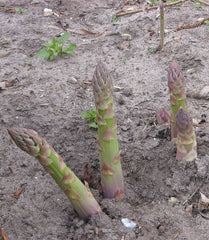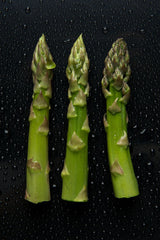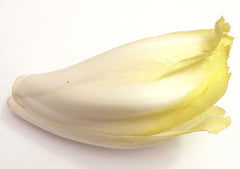Nasturtium officinale, Watercress
Watercress is very rich in vitamins and minerals, and has long been valued as a food and medicinal plant. Considered a cleansing herb, its high content of vitamin C makes it a remedy that is particularly valuable for chronic illnesses.
Watercress is often cultivated for its edible leaves. Plants will often continue to grow all through mild winters. A fast-growing plant, the stems trail along the ground or float in water and produce new roots at the leaf nodes, thus making the plant very easy to propagate vegetatively.
Watercress is easily grown when given the correct conditions of slowly flowing clean water, preferably coming from chalky or limestone soils. It prefers to grow in water about 5cm deep with an optimum pH 7.2. Plants can be grown in wet soil if the position is somewhat shaded and protection is given in winter, though the flavour may be hotter.
Hardy to about -15°c.
The flowers are a rich source of pollen and so are very attractive to bees.
Sow spring in a pot emmersed to half its depth in water. Germination should take place within a couple of weeks. Prick out seedlings into individual pots whilst they are still small and increase the depth of water gradually until they are submerged. Plant out into a pond in the summer. Cuttings can be taken at any time in the growing season. Virtually any part of the plant, including a single leaf, will form roots if detached from the parent plant. Just put it in a container of water until the roots are well formed and then plant out in shallow water.
Edible uses
Leaves - raw or cooked. Water cress is mainly used as a garnish or as an addition to salads, the flavour is strong with a characteristic hotness. It has a reputation as a spring tonic, and this is its main season of use, though it can be harvested for most of the year and can give 10 pickings annually. Some caution is advised if gathering the plant from the wild, see the notes above on toxicity. The leaves are exceptionally rich in vitamins and minerals, especially iron. A nutritional analysis is available.The seed can be sprouted and eaten in salads. A hot mustardy flavour.
The seed is ground into a powder and used as a mustard. The pungency of mustard develops when cold water is added to the ground-up seed - an enzyme (myrosin) acts on a glycoside (sinigrin) to produce a sulphur compound. The reaction takes 10 - 15 minutes. Mixing with hot water or vinegar, or adding salt, inhibits the enzyme and produces a mild but bitter mustard.http://practicalplants.org/wiki/Nasturtium_officinale








